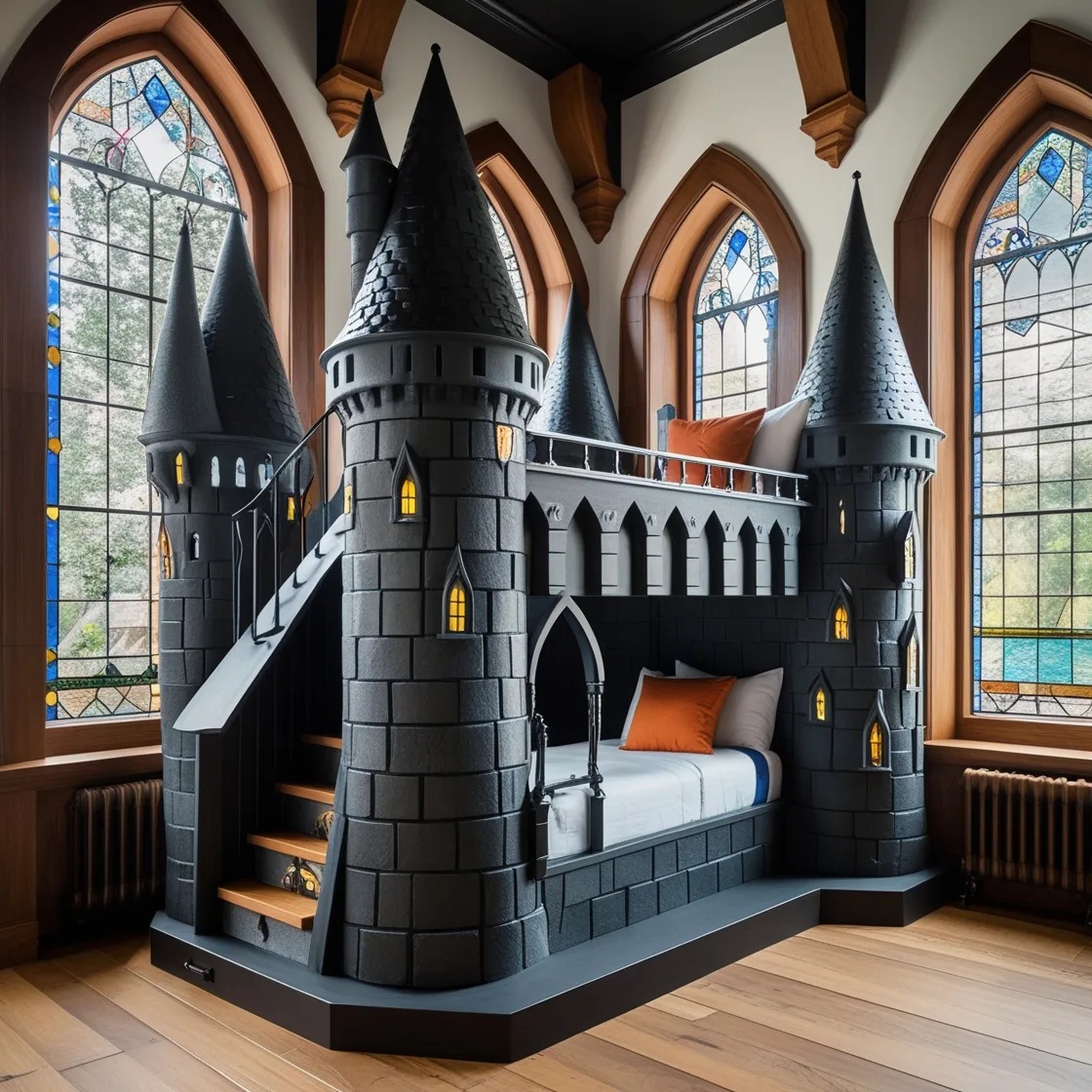Looking to add a touch of fun and functionality to your child’s bedroom? A Volkswagen bunk bed might just be the perfect solution. These unique beds combine the iconic design of a VW camper van with the practicality of a space-saving bunk bed. Imagine your little one’s delight as they climb into their own mini adventure vehicle every night for bedtime. With realistic details and sturdy construction, these beds offer both style and durability. Say goodbye to boring bedtime routines and hello to an exciting new way for your child to drift off to dreamland.
DIY Project Overview
Project Scope
To embark on the Volkswagen bunk bed project, understand its design and purpose thoroughly. Identify the key components like sturdy wooden frames, ladder, and railings. Set clear goals for a fun and safe sleeping space.
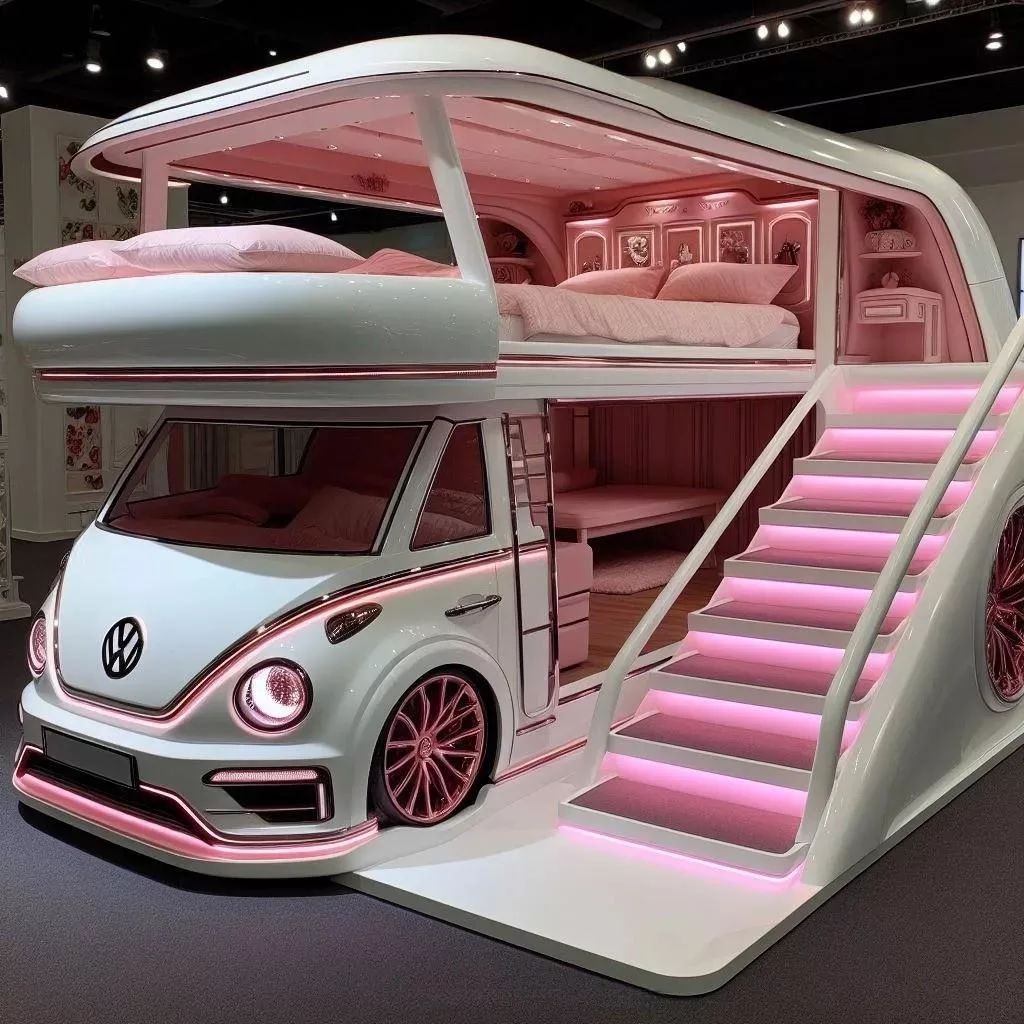
Timeframe Expectations
Estimate the completion time based on your pace and commitment. Plan a realistic schedule considering assembly intricacies. Allocate sufficient time for each stage to ensure precision.
Skill Level
Assess your DIY prowess before diving into this advanced project. Consider tools like drills, saws, and measuring tape required for construction. Be ready for challenges that may arise during the building process.
Gathering Materials
Frame Components
When constructing the Volkswagen bunk bed, gather all materials required for the frame assembly. Each component plays a crucial role in providing support to the structure. It’s essential to comprehend the function of every piece to ensure stability. Accurate measurements and precise cuts are necessary for seamless assembly.
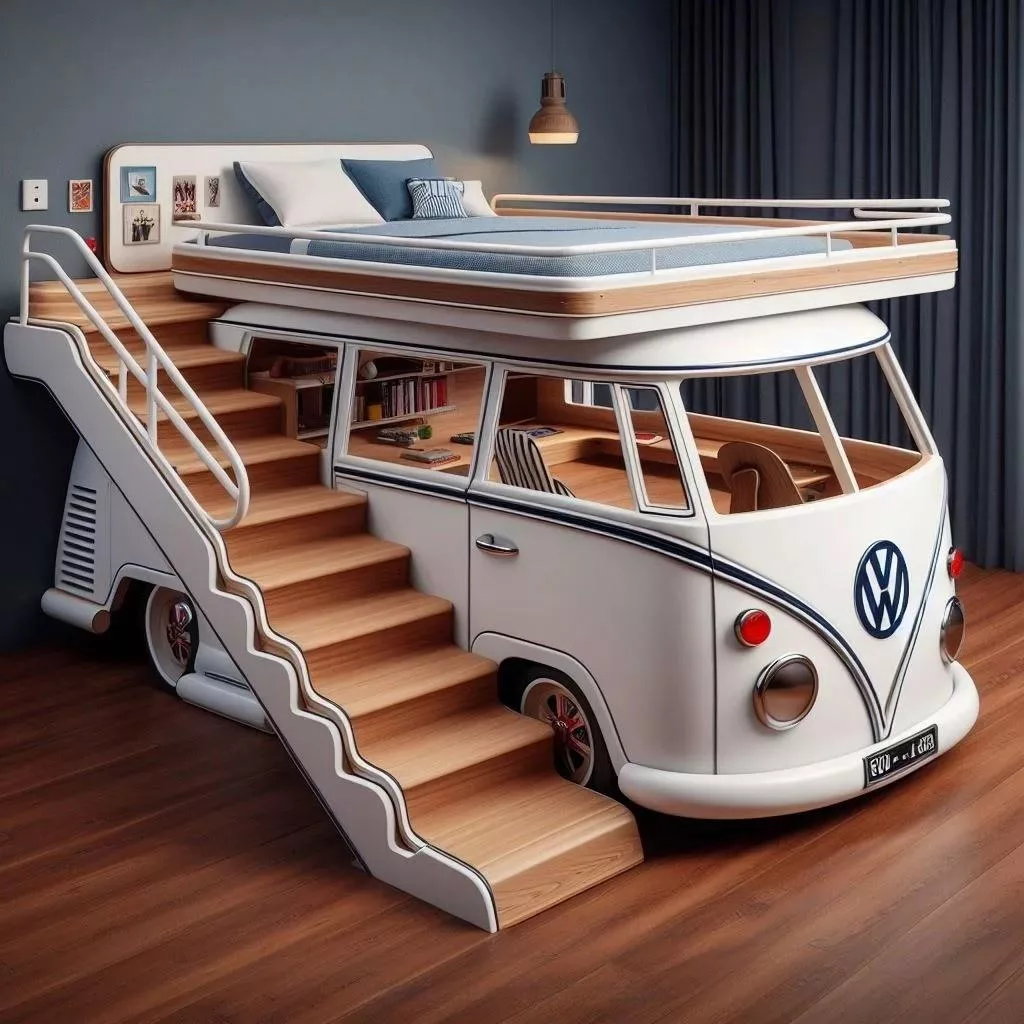
Outer Skin Panels
To achieve the iconic VW bus appearance, focus on creating the outer skin panels. Follow instructions meticulously when cutting and shaping these panels to fit the frame perfectly. Attention to detail is key, especially when working on curves and edges, as they contribute significantly to the realistic look of the bunk bed.
Hardware and Paint
Choosing suitable hardware and paint colors is vital for both assembly and finishing touches. Select hardware that guarantees secure attachment, enhancing the overall stability of the bunk bed. Opt for durable paint that is child-safe and complements the design aesthetic seamlessly.
Bottom Frame Assembly
Cutting Pieces
When assembling the bottom frame of the Volkswagen bunk bed, precision in cutting the wood pieces is crucial. Practice accurate cuts using tools like a jigsaw or miter saw for optimal results. Double-check measurements to prevent any errors that could impact the final product.
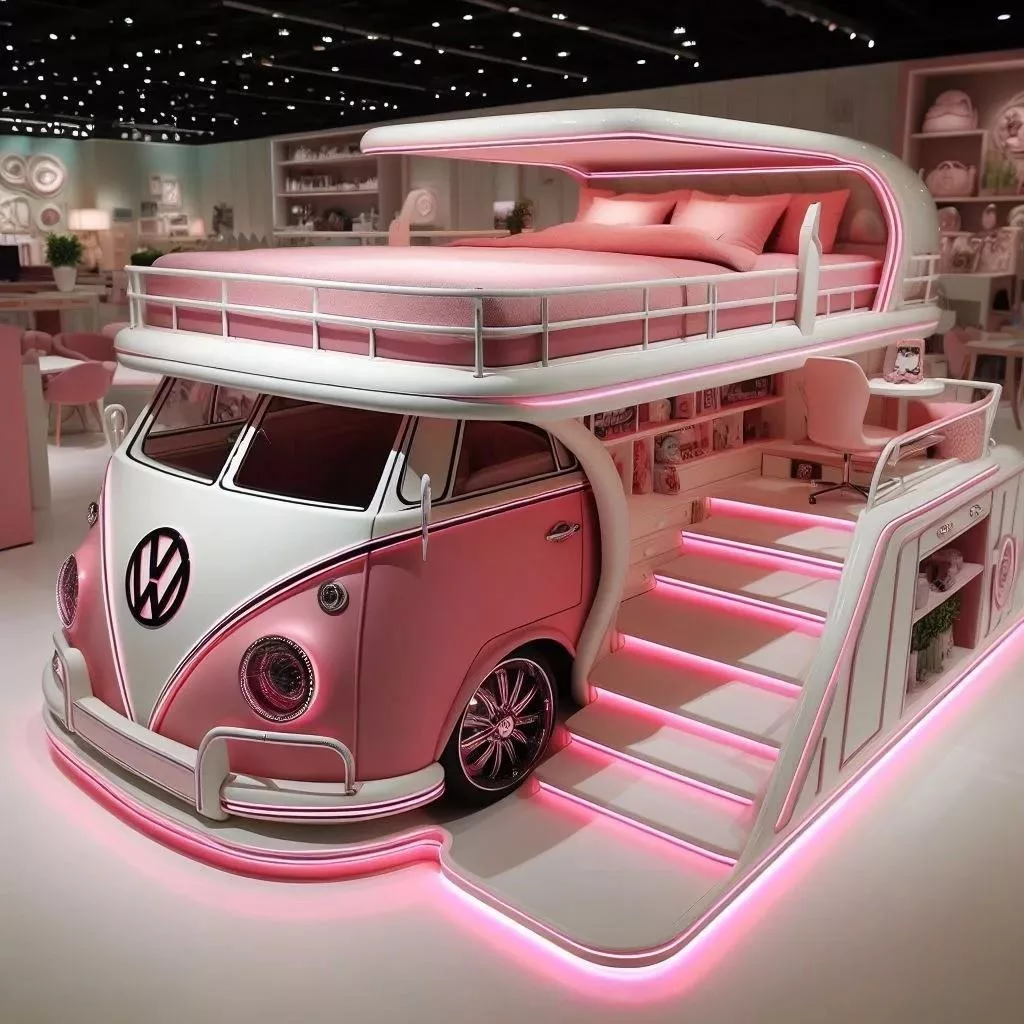
Joining Sections
To create a sturdy structure, it’s essential to understand how to join different sections of the bunk bed frame effectively. Utilize screws, bolts, and brackets to secure connections and ensure stability. By following step-by-step instructions diligently, you can guarantee proper alignment during the assembly process.
Wall Frame Crafting
Side Panels
Construct the side panels of the bunk bed to enclose the sleeping area. Incorporate design elements such as windows or decals to add a personalized touch. Ensure that the panels fit snugly against the frame to achieve a seamless finish.
Support Beams Install support beams to reinforce the structure and distribute weight evenly across the bunk bed. Follow specific guidelines for positioning the beams to prevent any potential sagging or instability issues. Utilize high-quality materials and secure attachments for enhanced durability.
Front Curved Frame
Shaping Curves
The arc of the front curved frame in a Volkswagen bunk bed adds a sleek and modern touch to the design. It creates a unique visual appeal that mimics the iconic Volkswagen van’s signature look. The smooth, rounded edges of the frame enhance the overall aesthetics of the bed, making it stand out in any room.
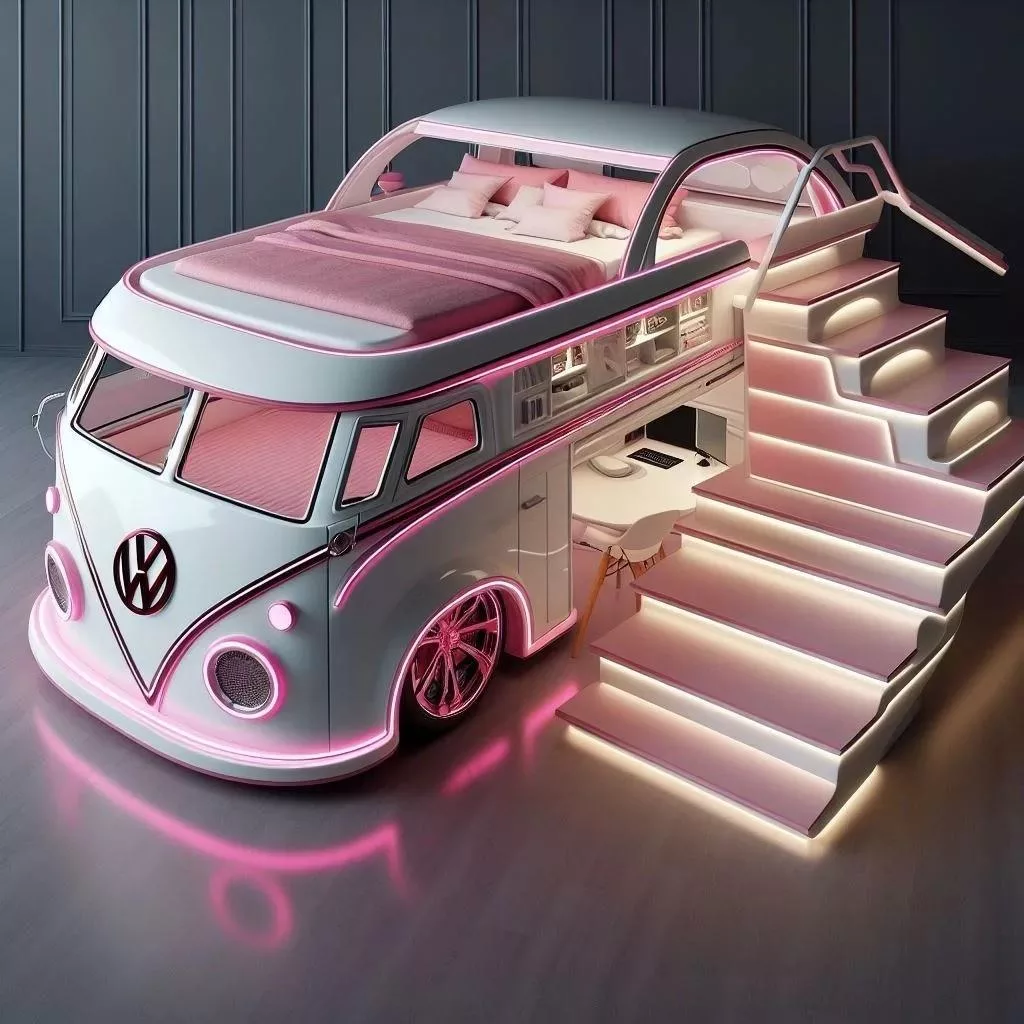
When crafting the front curved frame, precise measurements and angles are crucial to achieve the perfect arc shape. Each curve is meticulously calculated to ensure symmetry and balance in the design. The process involves bending and shaping metal or wood materials with precision tools to create a seamless and elegant curve that defines the bunk bed’s distinctive style.
Structural Integrity
The front curved frame not only enhances the visual appeal but also plays a vital role in ensuring the structural integrity of the Volkswagen bunk bed. The arc shape provides additional support and stability to the overall structure, making it sturdy and durable for long-term use. This feature prevents any wobbling or shaking, offering a safe and secure sleeping environment for users.
To reinforce the structural integrity of the front curved frame, high-quality materials such as robust metal or solid wood are utilized. These materials undergo rigorous testing to meet safety standards and guarantee reliability. The combination of innovative design and durable construction ensures that the Volkswagen bunk bed not only looks stylish but also functions effectively for years to come.
Rear Frame Setup
Back Panel Assembly
The back panel assembly is a crucial step in constructing the Volkswagen bunk bed. Begin by attaching the back panels to the rear frame using screws. Align the panels carefully to ensure a sturdy and secure fit. This step sets the foundation for the upper bunk’s support structure.

To enhance stability, consider reinforcing the back panels with additional support beams. These beams provide extra strength and durability, especially for the top bunk. Secure them firmly to prevent any wobbling or shifting during use. This meticulous approach guarantees a safe sleeping environment for users.
Attachment Points
Identifying the attachment points on the rear frame is essential for proper assembly. Locate key areas where screws or bolts will connect different components securely. Ensure these points are reinforced and can withstand weight and movement without compromising safety. Proper attachment points are vital for the overall structural integrity of the bunk bed.
When securing components, double-check each attachment point to avoid any loose connections that could lead to instability. Tighten all screws or bolts adequately to prevent any risks of dislodging or collapsing. By paying attention to these details, you create a reliable and durable Volkswagen-inspired bunk bed for both children and adults.
Top Frame Installation
Securing to Walls
To ensure safety and stability, anchor the top frame securely to the walls using appropriate hardware. This step is crucial for preventing accidents and ensuring the bed’s durability. Use sturdy screws and wall plugs to firmly attach the frame to the walls.

- Pros:
- Enhanced safety measures
- Increased stability and support
- Cons:
- Requires careful measurement and alignment
- Permanent fixture that may limit room layout flexibility
Stability Checks
After securing the top frame, conduct thorough stability checks to guarantee its reliability. Test the bunk bed by applying pressure from different angles to simulate various sleeping positions. Ensure there are no wobbles or creaks, indicating a secure installation.
- Perform a visual inspection of all connections.
- Apply gentle pressure on different parts of the frame.
- Check for any signs of movement or instability.
Outer Skin Attachment
Side Skins
The side skins of the volkswagen bunk bed are crucial for providing structural support and aesthetic appeal. These components typically attach to the sides of the bed frame, enclosing the sleeping area securely. To install the side skins effectively, ensure that they align perfectly with the top frame previously assembled. Use screws or bolts to secure them firmly in place, guaranteeing stability and safety for the sleeper.
- Align side skins with precision
- Securely fasten using screws or bolts
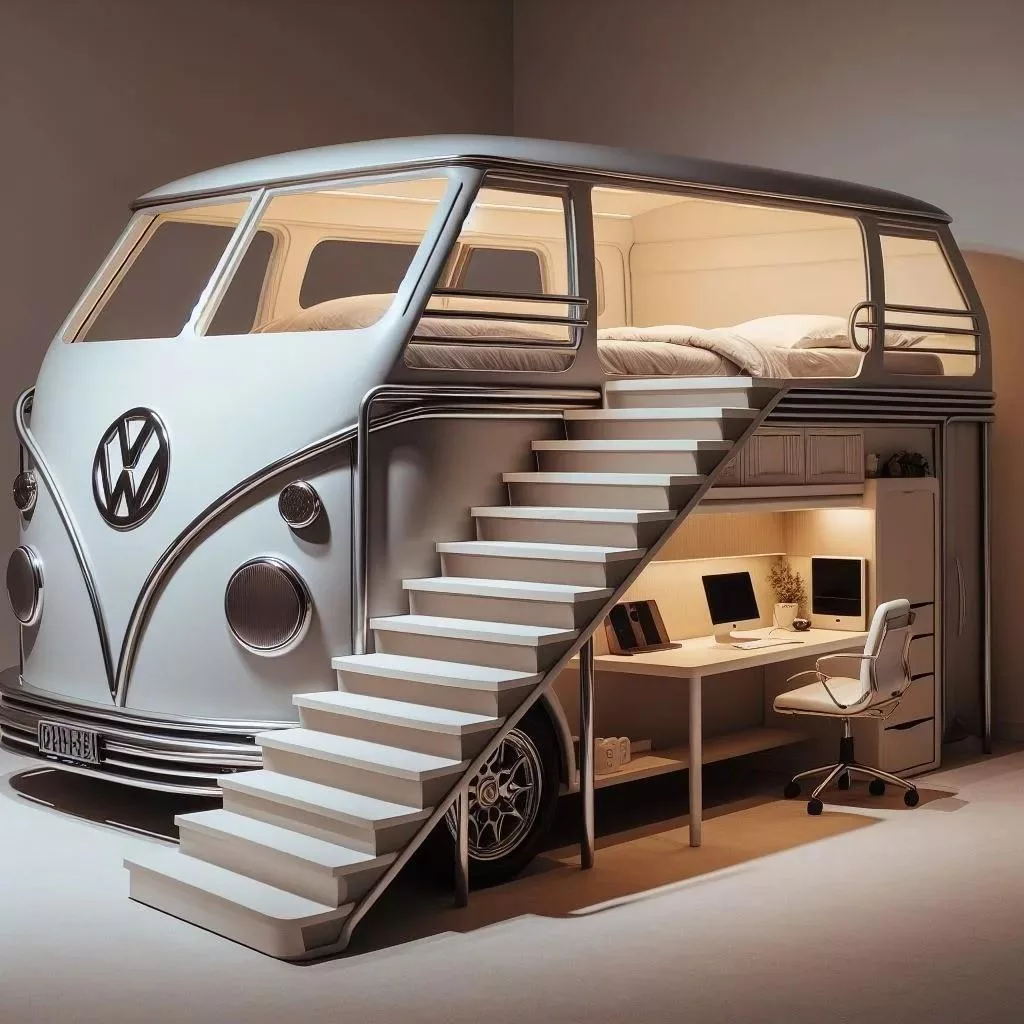
Front and Rear Skins
The front and rear skins play a significant role in completing the overall look of the volkswagen bunk bed. These panels enclose the front and back of the bed, enhancing its visual appeal. When attaching the front and rear skins, make sure they align seamlessly with the existing structure. Use appropriate hardware such as screws to affix them securely, creating a cohesive and polished finish for the bed.
- Enhance visual appeal
- Affix securely with screws
Final Touches
Security Rail and Ladder
Install the security rail to ensure your child’s safety while they sleep on the bunk bed. The ladder should be sturdy and properly attached for easy access.
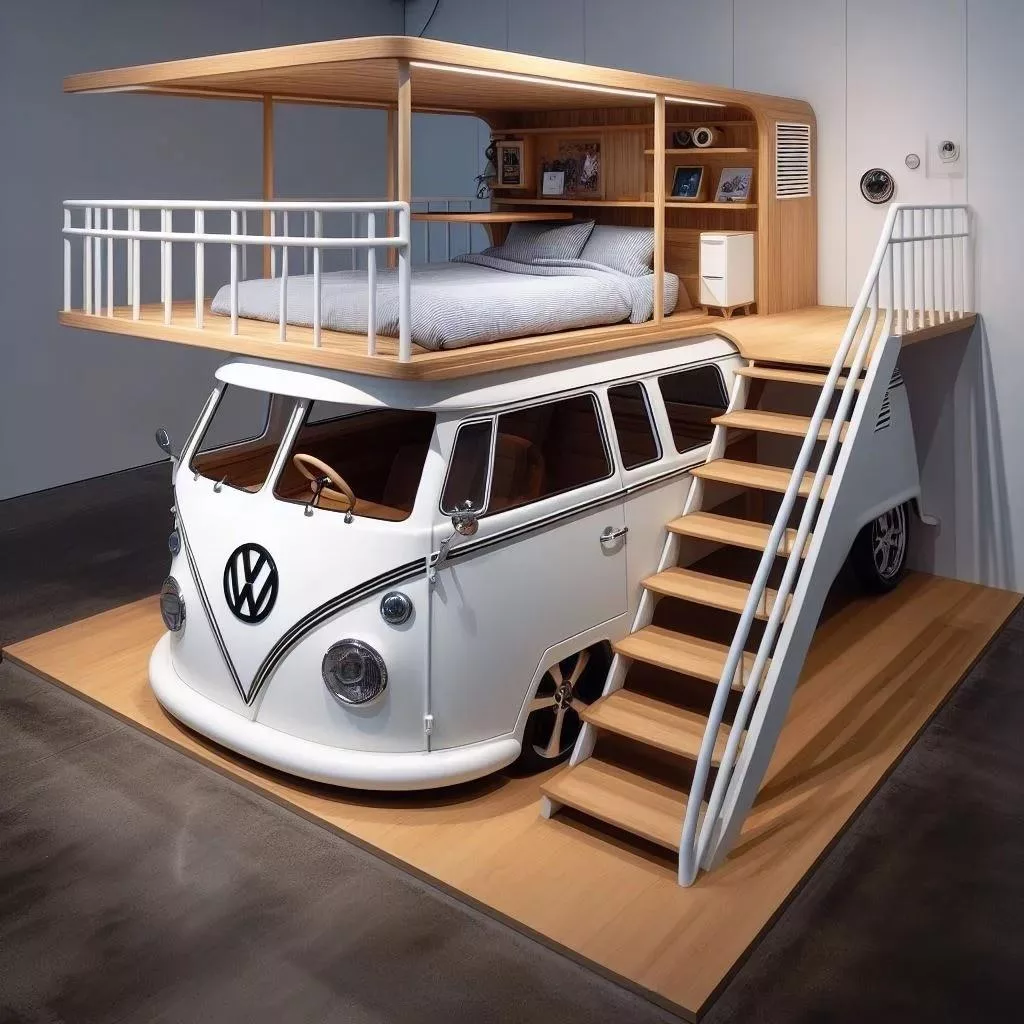
- Ensure that the security rail is at an appropriate height to prevent falls.
- Double-check the ladder’s stability before allowing anyone to climb up or down.
Inside Skin and Accents
Add a personal touch by decorating the inside skin of the bunk bed with your child’s favorite colors or themes. Consider using stickers, stencils, or paint for customization.
- Incorporate accents like LED lights or small shelves for added functionality.
- Make sure the inside skin is smooth and free from any sharp edges to prevent injuries.
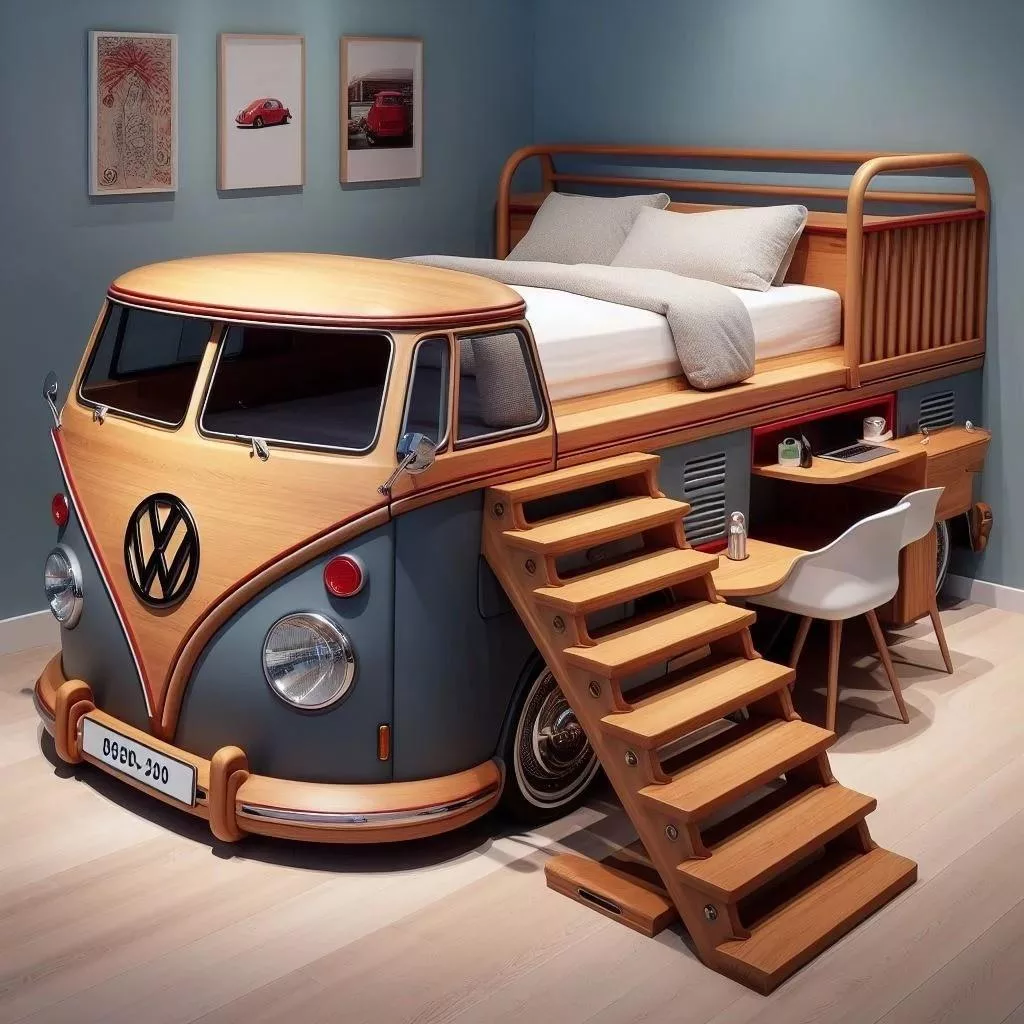
Painting and Decoration
Painting the bunk bed in a color that your child loves can make it more appealing. Use non-toxic paint suitable for furniture to ensure safety.
- Apply a primer before painting to ensure better adhesion.
- Allow each coat of paint to dry completely before applying the next layer.
Final Remarks
You’ve now completed the intricate steps of crafting your very own Volkswagen bunk bed. From gathering materials to adding final touches, each stage has brought you closer to a unique piece that combines creativity and functionality. As you admire your finished project, take pride in the skills you’ve honed and the personalized touch you’ve added to your living space.
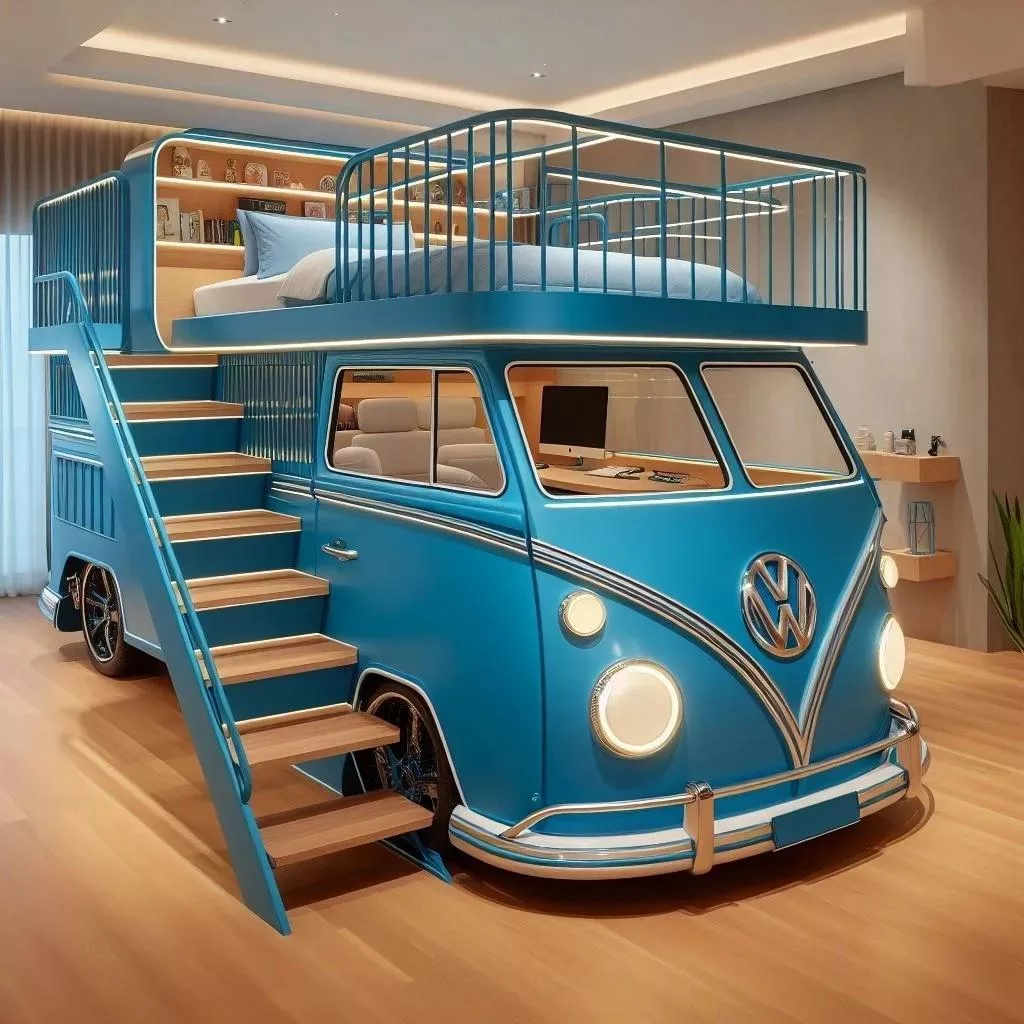
Now that your Volkswagen bunk bed stands proudly in your room, consider sharing your creation with others. Whether through social media posts, DIY forums, or inviting friends over to see it in person, inspire fellow DIY enthusiasts with your innovative design. Your journey from an idea to a tangible masterpiece can motivate others to embark on their creative projects. Keep exploring new ideas and pushing the boundaries of DIY craftsmanship.




